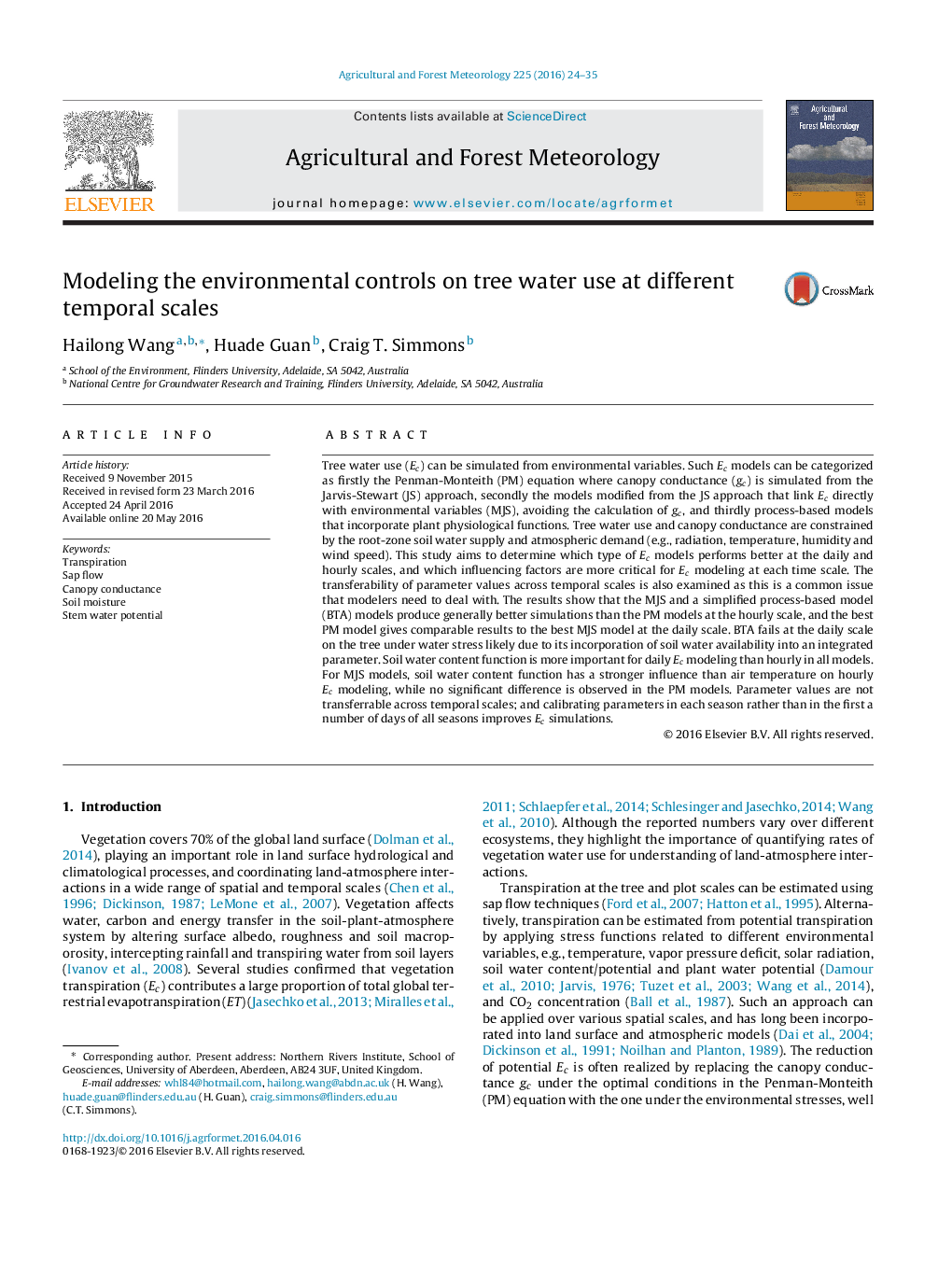| Article ID | Journal | Published Year | Pages | File Type |
|---|---|---|---|---|
| 81354 | Agricultural and Forest Meteorology | 2016 | 12 Pages |
•Three types of transpiration (Ec) models are compared at daily and hourly scales.•Penman-Monteith method is outperformed by two other models at the hourly scale.•Models with four environmental variables perform better than those with reduced variables.•Including soil water function is more important at the daily than hourly scale.•Parameter values in Ec models are not transferable across daily and hourly scales.
Tree water use (Ec) can be simulated from environmental variables. Such Ec models can be categorized as firstly the Penman-Monteith (PM) equation where canopy conductance (gc) is simulated from the Jarvis-Stewart (JS) approach, secondly the models modified from the JS approach that link Ec directly with environmental variables (MJS), avoiding the calculation of gc, and thirdly process-based models that incorporate plant physiological functions. Tree water use and canopy conductance are constrained by the root-zone soil water supply and atmospheric demand (e.g., radiation, temperature, humidity and wind speed). This study aims to determine which type of Ec models performs better at the daily and hourly scales, and which influencing factors are more critical for Ec modeling at each time scale. The transferability of parameter values across temporal scales is also examined as this is a common issue that modelers need to deal with. The results show that the MJS and a simplified process-based model (BTA) models produce generally better simulations than the PM models at the hourly scale, and the best PM model gives comparable results to the best MJS model at the daily scale. BTA fails at the daily scale on the tree under water stress likely due to its incorporation of soil water availability into an integrated parameter. Soil water content function is more important for daily Ec modeling than hourly in all models. For MJS models, soil water content function has a stronger influence than air temperature on hourly Ec modeling, while no significant difference is observed in the PM models. Parameter values are not transferrable across temporal scales; and calibrating parameters in each season rather than in the first a number of days of all seasons improves Ec simulations.
